- News
- Reviews
- Bikes
- Accessories
- Accessories - misc
- Computer mounts
- Bags
- Bar ends
- Bike bags & cases
- Bottle cages
- Bottles
- Cameras
- Car racks
- Child seats
- Computers
- Glasses
- GPS units
- Helmets
- Lights - front
- Lights - rear
- Lights - sets
- Locks
- Mirrors
- Mudguards
- Racks
- Pumps & CO2 inflators
- Puncture kits
- Reflectives
- Smart watches
- Stands and racks
- Trailers
- Clothing
- Components
- Bar tape & grips
- Bottom brackets
- Brake & gear cables
- Brake & STI levers
- Brake pads & spares
- Brakes
- Cassettes & freewheels
- Chains
- Chainsets & chainrings
- Derailleurs - front
- Derailleurs - rear
- Forks
- Gear levers & shifters
- Groupsets
- Handlebars & extensions
- Headsets
- Hubs
- Inner tubes
- Pedals
- Quick releases & skewers
- Saddles
- Seatposts
- Stems
- Wheels
- Tyres
- Health, fitness and nutrition
- Tools and workshop
- Miscellaneous
- Cross country mountain bikes
- Tubeless valves
- Buyers Guides
- Features
- Forum
- Recommends
- Podcast
TECH NEWS
 Scott Addict RC launch - RC Ultimate full bike.jpg
Scott Addict RC launch - RC Ultimate full bike.jpgScott unveils new 5.9kg Addict RC road bike... the same weight as the 2008 version
Scott has today unveiled the latest incarnation of the Addict RC, its top-end lightweight road bike, claiming frame weights of just 640g (size medium) and complete bikes starting at 5.9kg.
The updated Addict RC has been spotted before now, but today’s the official launch day and, as you read this, it should be available at Scott dealers. And boy, is it ever light.
The Ultimate build pictured above weighs in at just 5.9kg (13lb) as a full build, so we’re back to the days of the pros having to add some ballast to their rigs to nudge them over the UCI’s 6.8kg minimum weight limit for racing, even with pedals and bottle cages added. The frame is available in two configurations, HMX and HMX-SL, Scott claiming a weight of just 640g for the lighter HMX-SL version in a size medium.
We haven’t seen weights this low for… well, in Scott’s case, since the first iteration of the Addict, way back in 2008. The top-dollar build of that first frameset, with its mechanical gears, rim brakes, wheels and tubular tyres, tipped the scales at 5.9kg, and the bike has never been that light since. That was the inspiration for the new frame, and the target for the scales at the end of the process.
“We were quite happy when we had developed the Foil RC, our aerodynamic bike, with the results we got,” says Christian Holweck, the product designer of the new Addict. “We wanted to see how much we can differentiate a climbing bike from the Foil. How light can we go with the climbing bike? There was still potential to do a much lighter bike, and we were particularly interested in the sensation you get from a climbing bike: how it feels to ride such a light bike, how nimble it is, how effortless it feels.”
Bike design is an iterative process, and there are plenty of similarities with the outgoing model. But five years is also a long time in bike design (the last Addict RC was announced in June 2019 for model year 2020), and the sub-6kg target – 800g less than the Ultimate build of the previous bike – meant revisiting pretty much everything on the bike and trying to figure out savings. The result is that every single component of the bike is lighter for 2025.
The Addict RC Ultimate’s HMX SL frame weighs in at a claimed 640g, fully finished in a medium size. Scott had an unfinished frame on the scales at the launch, which was a nudge under 600g; prepping the frame, painting it and adding things like axle inserts adds 40g.
The HMX version of the frame found on the non-Ultimate models (such as the RC10, above) is a little heavier, but Scott still claims complete bike weights as low as 6.5kg.
For comparison, Specialized claims that its S-Works Tarmac SL8 FACT 12r Carbon frame weighs 685g. It also says that its S-Works Aethos frame weighs just 588g (56cm version) with complete bikes from 5.9kg, although it’s always dangerous to compare weights across different brands; they rarely agree.
At the computer modelling stage, it’s easy to try different things, so a lot of work was put into the design before a physical model was ever made.
“Really early in the process, we did a lot of different versions”, says Christian. “Some of them were generated by the computer, some of them were our proposals, driven by aesthetics. We compared all of them and really analysed every tube dimension. And then, obviously, it's all connected. You can’t just say: ‘This is the down tube size.’ You always have to say: ‘Okay, how is the combination of the seat tube together with the down tube working?’ And then, when it comes to transitions, a lot of the stress is in these transition areas, the bottom bracket area and so on.
"We were looking for tailor-made surface solutions to really guide the forces through that frame. The more you can do that, and prevent stress build-up, the less material you need.”
Scott was keen to keep the contact points in the same position as before and to match up with the Foil, but in five years tyres have got bigger; The pros now regularly race on 28mm or 30mm tubeless tyres and the new Addict RC was designed around a 30mm tyre, with clearance for up to 34mm.
That presents challenges with the geometry: a bigger tyre can make the front of the bike feel a bit lazier, and it means adding clearance at the back, which leads to longer chainstays, and the same effect.
To combat this, Scott has tightened the head tube angle a touch and introduced a more offset fork for the smaller sizes to mitigate toe overlap (where the wheel touches your toe when you turn). At the back, the seatpost has been moved, shunted forward 5mm relative to the bottom bracket to keep the chainstays the same length. A 5mm layback has been added to the seatpost to compensate. The bottom bracket has also been dropped very slightly to compensate for the higher tyre profile and keep the centre of gravity the same.
The fork changes are possibly even more significant; Scott is using a completely different process for manufacturing the new Addict RC fork.
“For the last 15 or 20 years, carbon fork manufacturing hasn't really changed much,” says Maximilian Koenen, the lead engineer on the Addict. “It's always been a four-piece approach: the fork blades are pre-formed on a wooden mandrel, and the steerer is rolled on a steel rod, and then everything is puzzled together around a crown piece, which is a glass fibre part that stays in the fork.”
Keeping the glass fibre in the fork, and then combining the four elements, adds weight.
Scott has moved to a new process, which moulds the fork in a single piece. It uses a polypropylene mandrel, which is essentially a smaller version of the fork. The material feels a bit like a water bottle, and the carbon is laid up around it. Then it’s inserted into the mould, and the mandrel is inflated to form the fork. After that the finished fork is heated up; the mandrel material softens and it can be pulled from the middle of the fork.
As you can imagine, there’s a lot of stuff to get through a small hole, so it took a while to perfect the process without the mandrel breaking and wrecking the fork, but the end result is a unit that’s single piece, lighter, and with a much smoother internal cavity.
“Previously, when the fork pieces were fitted together, you always had these areas where you had double the wall thickness because you need some overlaps”, says Max. That’s changed with the new process, so there are savings there. And now, finally, we can have some continuous fibres from the steerer into the fork legs.”
The frame and fork contribute 245g of the 800g weight saving over the previous Addict RC that was needed to hit the 5.9kg target, with 175g of that saving coming from the frame, and 75g from the fork.
There are just under 100g of savings from other frameset bits – seatpost, headset, axles – and the rest of the saving is in the build components. The Addict RC Ultimate isn’t trying that hard: the Syncros Capital SL 40 wheelset is very light but could easily be bettered in terms of weight, and the big tyres aren’t especially light either. You’re getting a 2x (double chainset) transmission, a proper padded saddle, and full bar tape. If you wanted to shave a bit more off for hillclimb season, a 5.5kg build is certainly achievable.
A lot of work has been done to make the frame and fork light, but lightness isn’t the only consideration. Scott is firmly in the two-bike camp for racing – an aero one, and a light one – but aerodynamics has still played a significant part in the design process. It hasn’t obviously been hit with the aero stick, but there is still plenty going on.
“The tubes, even though they look roundish, are actually all following aerodynamic principles,” says Christian. “It's just that mainly the trailing edges of the tubes are more rounded to get a better stiffness-to-weight ratio. But you still get some of the characteristics of an aero bike – how it behaves in crosswinds, and so on.
“I think that a good example is the seat tube area, where it transitions to the seatstays. We identified on the Foil, when you look at the whole system with the rider pedalling, that tilting the seatstays a little bit inward does something to the flow created by the wheel, and we can see drag reductions there. So we said: ‘Okay, maybe we can’t do it to the same extent as on the Foil, but we still like to use that principle.’ So we scaled it accordingly, validated it with our simulations, and then brought it into this bike as well.”
The last version of the Addict was at the forefront of what brands were doing with full integration at the time, but things were different back then, especially with groupsets: mechanical shifting and wired shifters still needed to be considered. Less so now, with wireless top-end groupsets from all the main players; the new bike is designed exclusively for wireless groupsets.
The Addict RC will be available with a new integrated cockpit, which is going to be made in a pretty wide range of widths and lengths; there are 18 variations in all at launch. The trend in handlebars has been ever narrower over the past few years, and that’s reflected in the choices available. The bar also includes a lightweight tool that slots into the end. It has just a T25 head – all the bolts on the bike are standardised to this head size – and a 6mm Allen key for the through axles.
To complement the new handlebar, there’s a skeletal 3D-printed metal GPS mount available in two lengths, which weighs in at just 10g.
Other tweaks are more aimed at making the bike easy to live with. Scott has built a channel into the seat clamp wedge, and that fits onto a carbon spline in the frame, so that the wedge can’t fall down when you take the seatpost out. It’s a nice touch, as is adding a circlip onto the seatclamp bolt so you can’t accidentally undo it all the way.
There’s also a new integrated rear LED light available, which fits magnetically into a recess in the seatpost. The Ultimate and RC Pro builds don’t have this because it would increase overall weight, but the other bikes in the range get it. The LED seatpost has the dual advantages of adding some neat visibility to the bike, and also dialling in a bit of comfort because the thinner seatpost profile in front of the light unit allows a bit more flex.
Talking of comfort and stiffness, it was refreshing to hear the Scott team say that lobbing a 30mm tyre on a race bike is likely to do more for the comfort than minor changes to the frame characteristics; we already know that, right? Even so, it wouldn’t be new bike day without some manner of percentage or numerical gains claimed, so I’m here to tell you the new frame is “36% more comfortable” than the old one. This means what, exactly?
“There is a testing protocol in the ISO 4210-6 (Section 4.5) to test vertical fatigue loads on the seat post”, says Scott. “This testing setup can be used to determine frame comfort (seat tube compliance). When comparing the MY25 Addict RC equipped with the comfort seatpost against the MY20 Addict RC equipped with the SL seat post (the stock setups of the 10/20/30 model for both bikes), the new version is 36% more compliant.”
So it’s not really comparing eggs with eggs, as the old bike didn’t have the cutout comfort seatpost, and there’s no word on how much of that comfort comes from the seatpost (my guess: a lot of it) rather than the frame, and it’s not a measure of “comfort” per se as it doesn’t take into account front end comfort. But anyway, there’s your number.
The aero claim is more straightforward. Thanks to aero updates that have reduced the frontal area of the bike by 15%, the new Addict RC is “12W quicker” than the outgoing model, by which Scott means that at a VERY brisk 45km/h you’ll need 12W less input to maintain your speed. That testing is done with a dummy rider and averaged over a range of yaw angles (the bike’s angle relative to the wind).
It’s worth noting that Scott says the new Addict is also more aerodynamically efficient than every Foil aero bike up to the current one, which is 9W better at the same speed. So in terms of aerodynamics, it’s no slouch, according to Scott’s figures
The Addict RC is available in five builds at launch:
Addict RC Ultimate (£12,799 / €12,999 / $14,999)
Frame Addict RC HMX SL
Fork Addict RC HMX SL
Groupset SRAM Red AXS (inc power meter)
Wheels Syncros Capital SL 40mm
Claimed weight 5.9kg
Addict RC Pro (£8,599 / £8,699 / $8,999)
Frame Addict RC HMX
Fork Addict RC HMX
Groupset Shimano Dura-Ace Di2
Wheels Syncros Capital 1.0S 40mm
Claimed weight 6.5kg
Addict RC 10 (£6,599 / €6,699 / $6,599)
Frame Addict RC HMX
Fork Addict RC HMX
Groupset Shimano Ultegra Di2
Wheels Syncros Capital 1.0S 40mm
Claimed weight 7.1kg
Addict RC 20 (£5,899 / €5,999 / $5,699)
Frame Addict RC HMX
Fork Addict RC HMX
Groupset Shimano Ultegra Di2
Wheels Syncros Capital 1.0 40mm
Claimed weight 7.4kg
Addict RC 30 (£4,899 / €4,999 / $4,999)
Frame Addict RC HMX
Fork Addict RC HMX
Groupset Shimano 105 Di2
Wheels Syncros Capital 1.0 40mm
Claimed weight 7.7kg
Go to www.scott-sports.com for more info.
Dave is a founding father of road.cc, having previously worked on Cycling Plus and What Mountain Bike magazines back in the day. He also writes about e-bikes for our sister publication ebiketips. He's won three mountain bike bog snorkelling World Championships, and races at the back of the third cats.
Latest Comments
- David9694 4 hours 38 min ago
Oxfordshire: Potholes 'out of control' and risk to cyclists...
- Motdoc 8 hours 52 min ago
You don't benefit from schools? You've never seen a doctor, a dentist, a teacher, didn't go to school yourself and don't care about the tax paying...
- thax1 10 hours 20 min ago
Another 'sound-alike' mid tier offer, so I get all excited and buy a bunch of them thinking I've got an absolute steal. Only to then realise I've...
- mdavidford 10 hours 30 min ago
first cast out the beam out of thine own eye
- eburtthebike 11 hours 52 min ago
Which is, ironically, very rare.
- mark1a 11 hours 53 min ago
New addition to the fleet, a Specialized Aethos. This is the Comp model, 12 speed 105 Di2, 10r carbon layup in pearlescent white, with upgraded...
- hawkinspeter 13 hours 1 min ago
Local 'nimbyism' dismissed as consensus is new scheme will 'increase footfall'...
- chrisonabike 13 hours 49 min ago
If they're formally recognising phone addiction, and have noted that our eating habits (driven by stuff people want to sell us) are obeseogenic ......
- Secret_squirrel 16 hours 59 min ago
Yes. Just like there's no push rod brakes or U brakes any more. Get with the program granddad.
- dreamlx10 17 hours 37 min ago
Looks like the perpetrators were not Italian

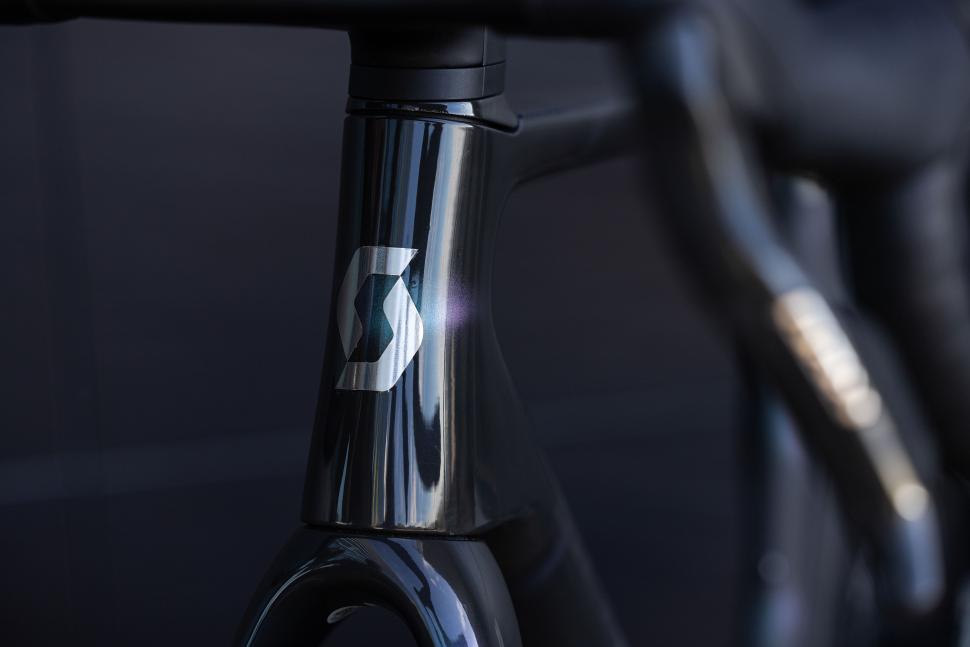
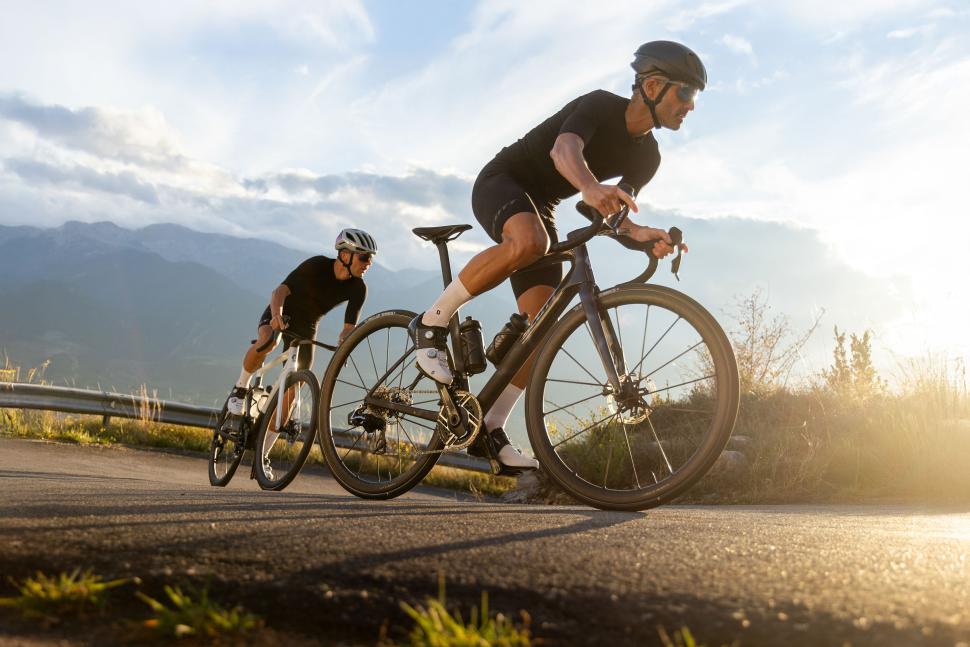
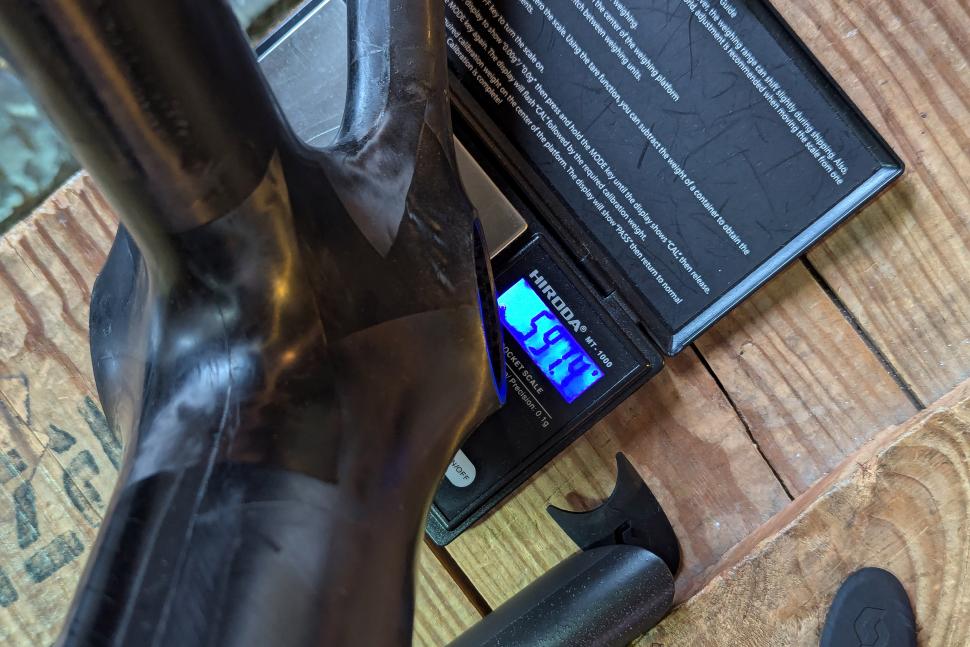
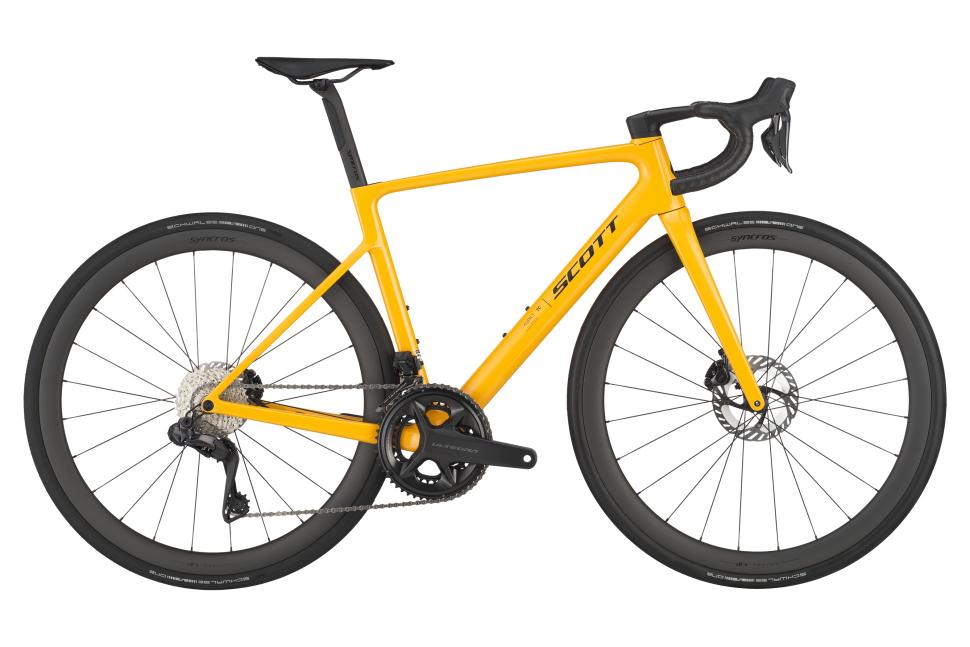

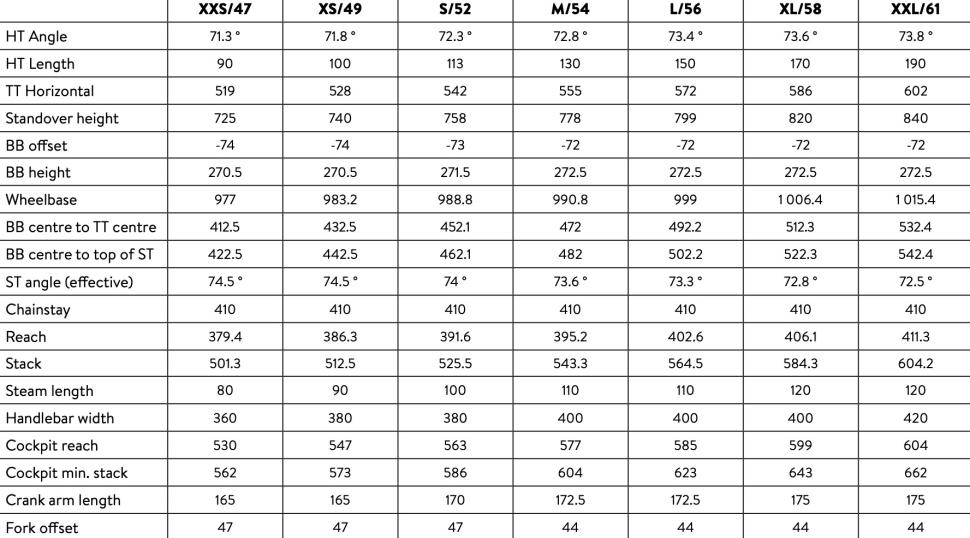
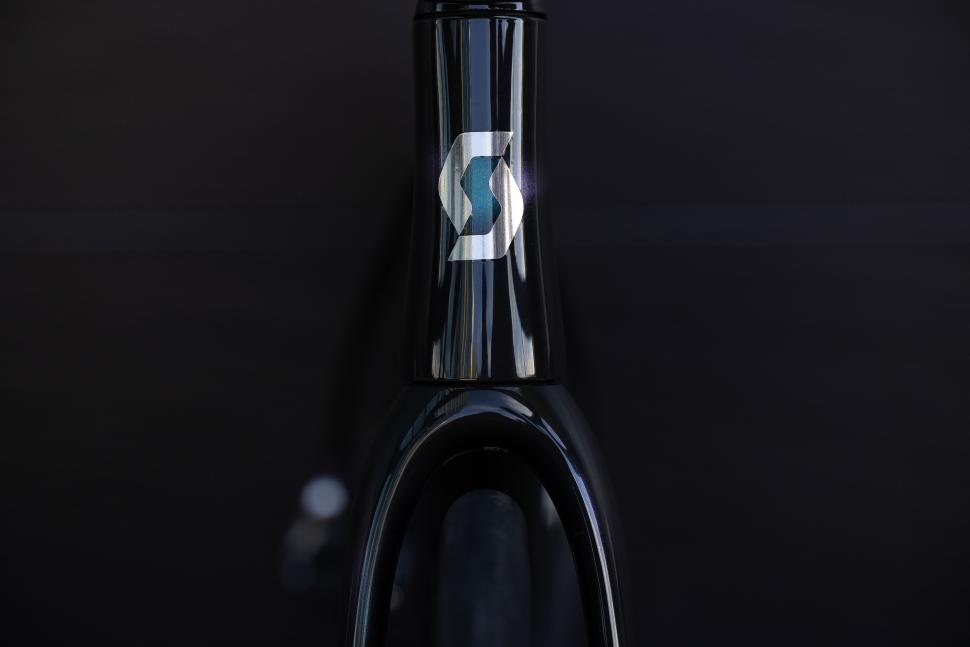
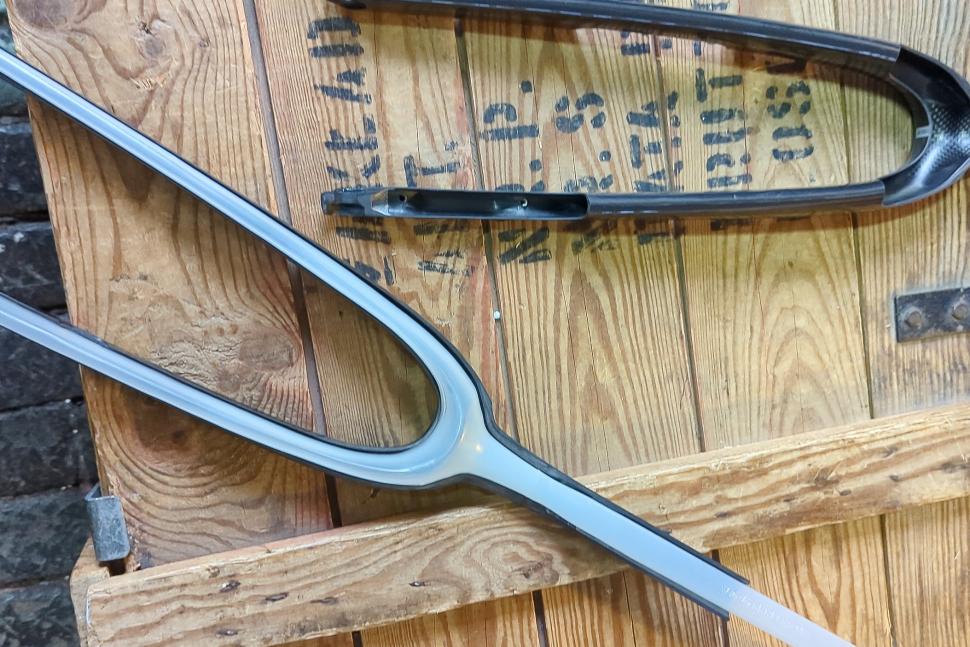

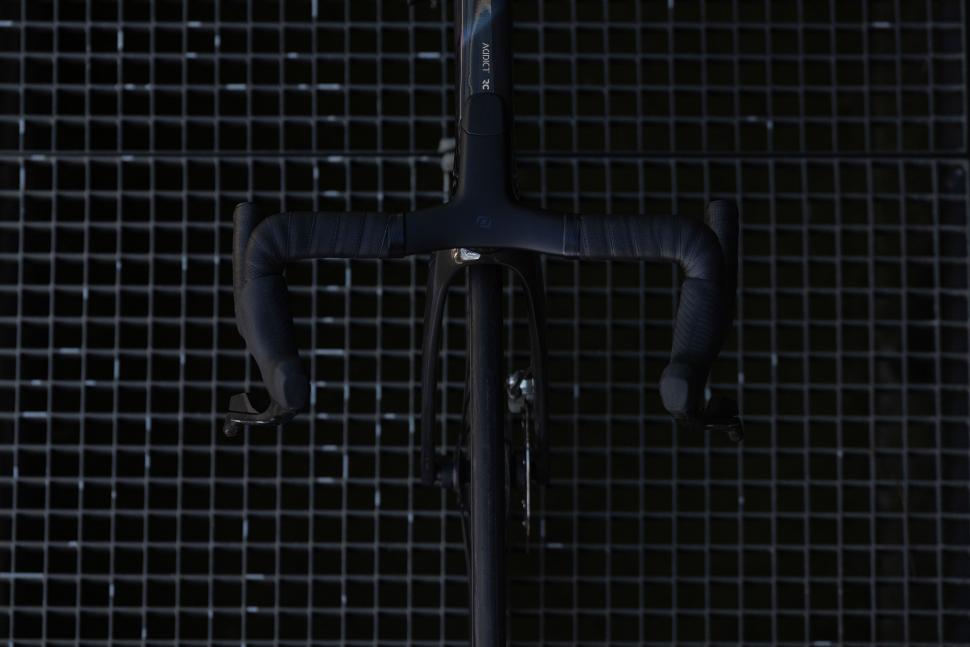
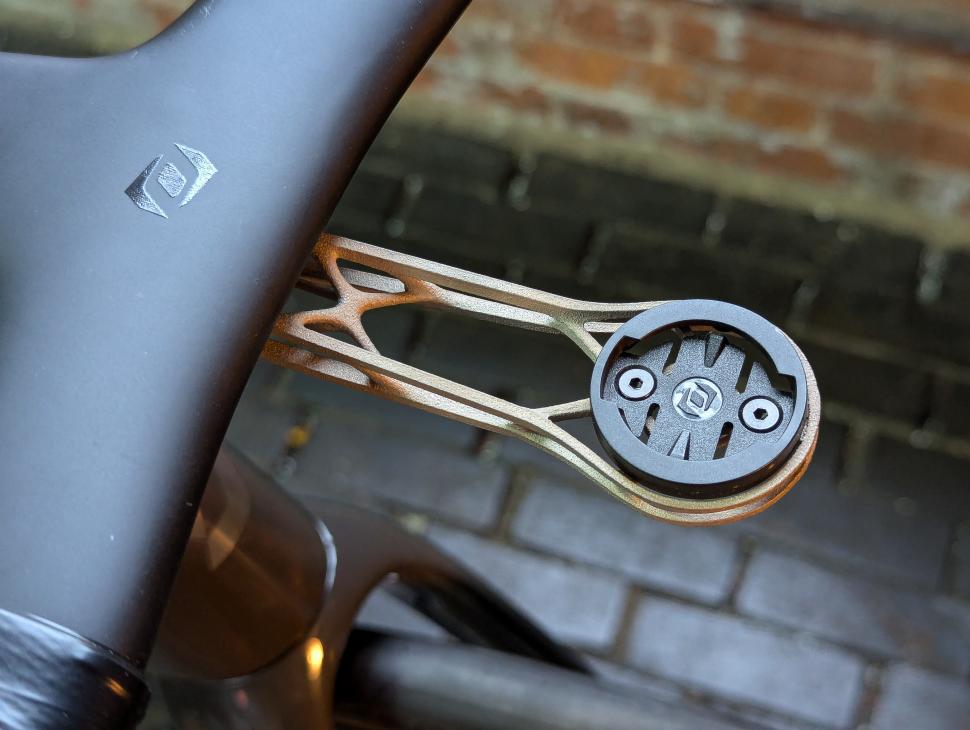




























Add new comment
16 comments
I like the shape of the frame, a modern look but with classic lines of a traditional bike.
But looking at the geometry chart on scott's website the reach appears super long ...
54cm - 395.2 mm + 110mm stem = 505.2mm
56cm 402.6 mm + 110mm stem = 512.6mm
A 56cm SL8 which already has an agressive bike reach - 395mm + 100mm stem = 495mm
It that right that the 54cm Scott has a 10mm longer overall reach than a 56cm SL8?
Andy
It's not that simple. Take a look at the geometry chart on the Scott website again and you will see that the Addict stem isn't horizontal, it runs perpendicular to the head tube angle, it seems at an angle of 28.7 degrees to horizontal, and they clearly show the 110mm measured at that angle. You can't simply add the stem length to the reach because they aren't in the same direction. A 110mm stem at 28.7 degrees to the horizontal only adds 96mm to reach (110 x cos28.7) instead of 110mm. This logic does not apply to the SL8 to the same extent, as it's stem runs pretty near horizontal and not perpendicular to the head tube (see bike pic on the Specialized site where this is very clear). (Note also that you have used "Frame Reach" figures for the SL8, instead of "Reach to Stem" and you can't add stem length to frame reach. These differ by about 3mm. )
Come again chief? The Tarmac in size 56 has a 73.5 degree HTA, the Addict in the same size comes in at 73.4 degrees. In terms of bike fit that's almost negligable, same stem fitted to either would be at practically the same angle
Its not the same stem fitted to the two bikes though, and we aren't talking about HTA we are talking about stem inclination or "stem rise" to use the official term. (When you buy a discrete stem, you specify it's rise angle, and you can even flip them upside down to change the inclination, integrated cockpits have a fixed rise angle). So as I said, look at pictures of the two bikes (links below). The Addict Stem is markedly inclined upwards, it is pretty obvious that the bar centre is above the level of the top of the steerer tube, and the geometry diagram shows the stem datum meeting the HTA at something close to a right angle, suggesting it is a straight stem inclined at 28.7 degrees due to HTA. The SL8 stem is much closer to horizontal, the bars being in line with the top of the steerer. Let's call it 15 degrees for the SL8 for the sake of argument. A 110mm stem at 28.7 degrees has the same impact on effective reach as a 100mm stem at 15 degrees, 96mm in each case. All of which tells us that Andyk's numbers are invalid, and that without accurate data on stem inclination we can't do a valid comparison. (I'm sure anybody spending this amount of money on a bike would get a bike fit anyway.)
https://www.specialized.com/gb/en/s-works-tarmac-sl8-shimano-dura-ace-di...
https://www.scott-sports.com/gb/en/product/scott-addict-rc-ultimate-bike
Hi Griff,
Thanks for responding to my question.
You've assumed that I compared the addict 1-piece cockpit to the roval rapide 1-piece cockpit, when I was actually looking on geometry geeks at the SL8 Expert geometry which has an SL7 stem (I don't want a 1-piece cockpit), and if I look at the geom chart/pictures of the Addict and Expert like you have done with the roval cockpit (which I think judging something just on visually how it looks is somewhat unreliable) then the Expert SL7 stem looks more akin to the Addict cockpit.
The SL7 stem comes in 6 & 12 degree angles I believe, the Rapide cockpit -6 degrees, the addict 1-piece I can't find any angle data for, but the addict alloy stem is -11 degrees, so I beleive the -11 would make the addict's reach even longer?
Yes, there's a lot of possible other factors at play here too, such as stem height at the steerer tube, size and number of spacers under the stem, etc. etc.
BUT all that aside, and assuming all what I've said above is still wrong, then even if you say at the angles you suggest, the stems are both equal at 96mm that still means the 54cm Addict has the same overall reach as the SL8 56cm, which to me seems really agressive for a 54, and would rule me out based on my bikefit data.
All the best,
Andy
Hi Andy,
Not wishing to prolong the debate, but having looked at the geometry charts for Addict and Tarmac, I see that for any given bike size, EVERY dimension on the Addict is bigger than the Tarmac, (wheelbase, standover, seat tube length, reach...). The 54 Addict is a bigger bike than a 54 Tarmac. This led me to look at their respective size approximation charts, which suggest that Scott and Specialized use very different sizing criteria. For example Scott have me slap bang in the middle of the 56 range, as do Trek and Cannondale. Specialized have me as a 58. If I was moving from Specialized to Scott, I would need to go down a size 🤷
Griff
Hi Griff, unfirtunately one of the key measurements isn't bigger - the stack - it's the same on the 54 SL8 - 544mm, as the 54cm Addict 543.3mm, so if I went down to a 52 in the Addict, it might well work in terms of reach BUT I'm pretty sure it won't work in terms of stack - a 52 would be too low for me even with the full compliment of spacers. I'm not sure Scott do test bikes, and even if I sent my bike fit data to them and they said a 54 could work - based on those reach figs - I would not just trust Scott's word for it at these price-points, only if I physically sat on one and rode it. Thanks for your help though. All the best, Andy
Yep, I appreciate your problem. I wouldn't buy a bike without at least sitting on the same frame configuration on a trainer in the shop, something I was even able to do many years ago on my first "proper" bike, a £600 Trek, let alone one costing several £k! If you know the Tarmac frame fits you, there is a lot to be said for sticking with it. (Having said that, Stack height on it's own is meaningless if the two bikes have a different Stem rise!) Good luck with whatever you choose.
More likely, the fork offset was increased to offset the gain in trail effected by the use of fatter tires.
Why is there only one (expensive) SRAM group available (only Red, no Force)?
Probably because the two top teams using Scott bikes also use Sram - and it's a bike designed for them. Q36.5, and Scott-Sram - they've already released footage of Nino riding it, with an unannounced new team mate.
Congrats to Scott for building an Aethos....
Strange comment. Many bikes today look similar, the new Addict and the Aethos definitely don't. (eg dropped versus traditional seatstays). Nor is the Aethos intended as an all out race bike (by Specialized's own admission), the Addict is. The design brief for the Aethos was light weight, comfortable and fast while retaining traditional diamond frame aesthetics, and it met that brief admirably, but with little attention to aero. The Addict was light weight first, with semi aero tubes and dropped seat stays to improve aero, hence it looks nothing like an Aethos. And if weight matters, it is after all the raison d'etre for both these bikes, the highest spec Aethos comes in at 6.34kg, 0,4kg heavier than the 5.9kg Addict. The two bikes have little in common.
They both start with 'A' and are six letters long, though
Looks like Specialized dusted off their blueprint for the Tarmac circa 2012-14 to 'create' the Aethos.
If anything, it looks a bit like an SL6